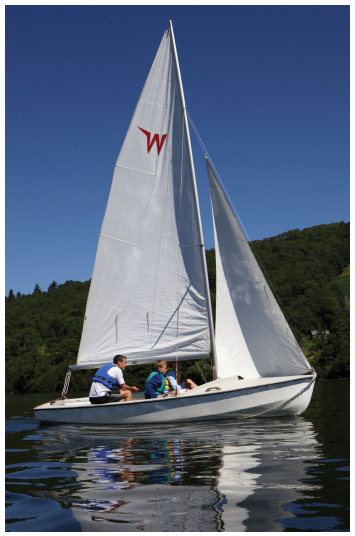39 6.1 Introduction
-
Last updated
- Dec 28, 2020

© Thinkstock
Cindy Hall is the owner and chief executive officer of SailRite Company. SailRite builds two models of sailboats that are sold at hundreds of retail boat showrooms throughout the world. At its inception several years ago, the company produced only the Basic model, which is 12 feet long and designed for two sailors. Very few options are available for this model, and the production process is relatively simple. Because many owners of the Basic model wanted to move to a bigger, more sophisticated boat, SailRite developed the Deluxe model two years ago. The Deluxe model is 14 feet long and designed for three sailors. Many additional features are available for this model, and the production process is more complex than for the Basic model. Last year, SailRite sold 5,000 units of the Basic and 1,000 units of the Deluxe.
Although sales of both models increased last year over the year before, company profits have steadily declined. Cindy, the CEO, is concerned about this trend and discusses her concerns with John Lester, the company’s accountant; Mary McCann, the vice president of marketing; and Bob Schuler, the vice president of production.
| Cindy (CEO): | Ever since we introduced the Deluxe model our profits have taken a beating. I need some input on what we should do to get this turned around. |
| Mary (Marketing Vice President): | I’m not sure you can blame our salespeople. We’ve asked them to push the Deluxe model because of the high-profit margins, and our sales force has really responded. Sales have steadily increased over the last couple of years, and customers seem to love our sailboats. |
| Bob (Production Vice President): | I don’t think the problem is with our products, and using our current costing system, we make $320 in profit for each Basic model and $850 for each Deluxe model. We need to take a close look at how the cost of each boat is determined. Overhead costs have increased significantly since we started producing the Deluxe boat—to about 45 percent of total production costs—and yet we use only one overhead rate based on direct labor hours to allocate these costs. I don’t see how this can lead to an accurate cost, and I assume we set the price based on the cost of each boat. |
| Cindy: | We certainly considered the cost in our pricing structure. Are you telling me the cost information I have isn’t accurate? |
| John (Accountant): | No, the cost information you have is fine for financial reporting, but not for pricing products. When we were producing only the Basic model, overhead allocation wasn’t an issue. All overhead costs were simply assigned to the one product. Now that we have two products, overhead is allocated based on direct labor hours as Bob stated. We are required to allocate overhead for financial reporting purposes, but I wouldn’t use this cost information for internal pricing purposes. |
| Bob: | I can tell you that the production process for the Deluxe model is much more complicated than the one for the Basic model, so I would expect to see significantly higher costs attached to the Deluxe boat. |
| John: | What I’m hearing is that we need better cost information. I think it’s time we move to a more sophisticated costing system called activity based costing. Give me time to do some research. Let’s meet next week. |
This dialogue between the accountant and top management emphasizes the importance of having accurate cost information for decision-making purposes. Very few costing systems provide “perfect” product cost information. Overhead (indirect manufacturing costs) can be allocated in a number of different ways and result in a number of different costs for the same product. The goal is to find a system of allocation that best approximates the amount of overhead costs caused by each product. Sophisticated costing systems are expensive, however. Organizations like SailRite must continually ask the question: Will the benefits of having improved cost information outweigh the costs of obtaining the information?
Several options are available to allocate overhead costs. Before we discuss these options, it is important to understand why overhead costs are allocated at all.


